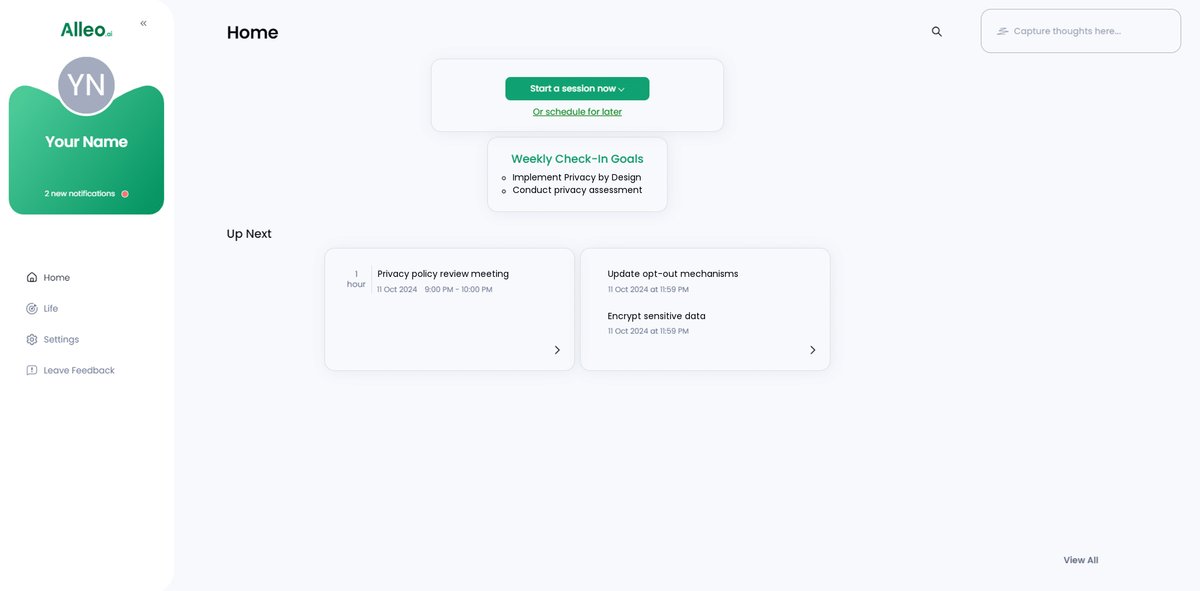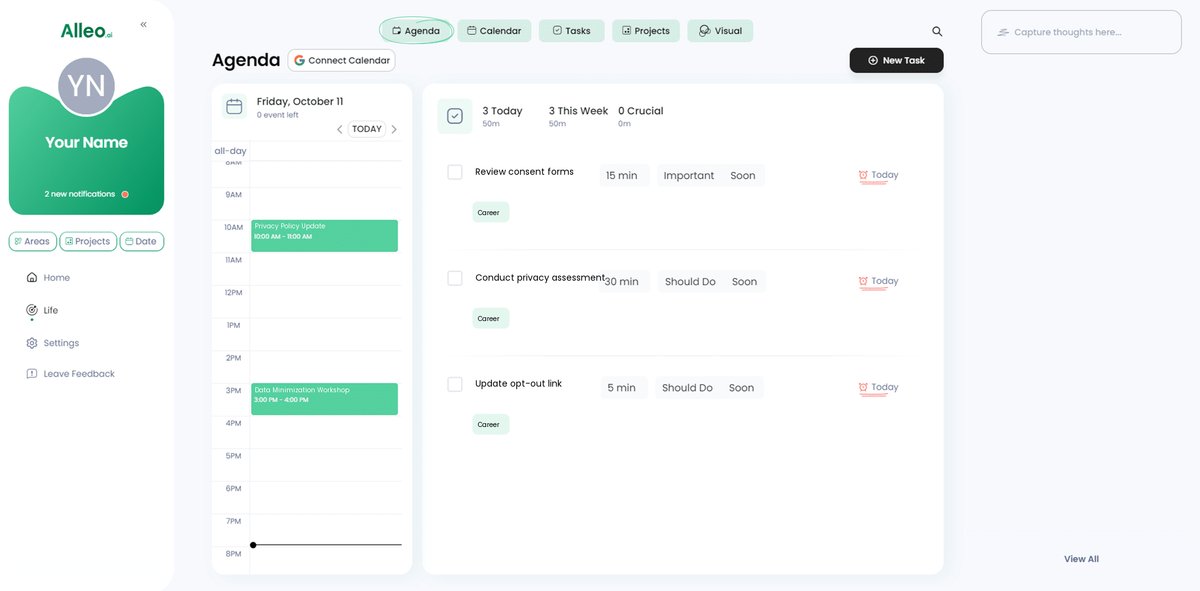How Tech Professionals Can Balance User Privacy and Data Collection: 6 Essential Steps
Are you struggling to find the balance between collecting user data for marketing and respecting their privacy concerns? Balancing user privacy and data collection is a crucial challenge in today’s tech industry.
As a life coach, I’ve helped many professionals navigate these challenges. In my experience, understanding the nuances of data privacy is key to building trust. Ethical data gathering practices and transparent data policies are essential for maintaining user confidence.
In this article, you’ll discover practical strategies to balance data collection with user privacy. We’ll cover Privacy by Design, privacy impact assessments, data minimization techniques, and more. You’ll learn about GDPR compliance for tech companies and how to implement privacy-enhancing technologies.
Let’s dive into the world of balancing innovation and user trust.

Understanding the Challenge of Balancing Privacy and Data Collection
Balancing user privacy and data collection is a complex issue. Many clients initially struggle with understanding how to collect valuable data without infringing on privacy, especially in the tech industry where GDPR compliance is crucial.
It’s a delicate dance that requires thoughtful strategies, including data minimization techniques.
Failing to address privacy concerns can lead to significant consequences. You risk losing customer trust, which is hard to regain.
Moreover, ignoring privacy issues can result in legal problems, particularly when it comes to user consent for data collection.
In my experience, businesses often overlook the importance of transparency. Customers want to know how their data is used, emphasizing the need for transparent data policies.
Without clear communication, you might face backlash and mistrust.
Prioritizing privacy can actually enhance your relationship with users. When customers feel secure, they are more likely to stay loyal and engaged, highlighting the importance of balancing innovation and user trust.
This balance is critical for long-term success in ethical data gathering practices.
Strategic Roadmap to Balance User Privacy and Data Collection
Overcoming this challenge requires a few key steps. Here are the main areas to focus on to make progress in balancing user privacy and data collection.
- Implement Privacy by Design Principles: Integrate data protection by design from the start and throughout the product lifecycle.
- Conduct Regular Privacy Impact Assessments: Evaluate and address privacy risks periodically to ensure GDPR compliance for tech companies.
- Use Data Minimization and Anonymization Techniques: Collect only necessary data and employ anonymization and pseudonymization methods.
- Offer Transparent Opt-In/Opt-Out Mechanisms: Make it easy for users to manage their data preferences, ensuring user consent for data collection.
- Employ Privacy-Enhancing Technologies (PETs): Utilize privacy-enhancing technologies like encryption and multi-party computation.
- Provide Clear, Accessible Privacy Policies: Ensure your transparent data policies are comprehensive and easy to understand.
Let’s dive in to explore ethical data gathering practices that balance innovation and user trust!
1: Implement Privacy by Design principles
Integrating privacy from the start is vital for balancing user privacy and data collection concerns in the tech industry.
Actionable Steps:
- Incorporate privacy considerations during the initial design phase of your products. Invite a privacy expert to your brainstorming sessions to identify potential issues early and ensure data protection by design.
- Regularly update privacy measures as part of your product lifecycle. Schedule quarterly reviews to ensure your privacy measures stay current and align with GDPR compliance for tech companies.
- Train your team on Privacy by Design principles. Organize workshops facilitated by privacy experts to keep everyone informed about ethical data gathering practices.
Explanation:
These steps are crucial because they embed privacy into your processes, ensuring compliance and building trust while balancing user privacy and data needs.
According to the Secure Identity Alliance, a privacy-by-design approach helps prevent privacy issues before they arise, aligning with industry best practices.
Key benefits of implementing Privacy by Design principles:
- Proactive approach to privacy protection
- Reduced risk of data breaches
- Enhanced user trust and loyalty
Taking these actions will set a strong foundation for your privacy strategy, incorporating data minimization techniques and privacy-enhancing technologies.
Let’s move on to the next part: conducting regular privacy impact assessments.

2: Conduct regular privacy impact assessments
Conducting regular privacy impact assessments (PIAs) is crucial for identifying and managing privacy risks while balancing user privacy and data needs.
Actionable Steps:
- Perform an initial privacy impact assessment before launching new products or services. Use a standardized PIA template to evaluate potential privacy risks and ensure GDPR compliance for tech companies.
- Schedule periodic PIAs to reassess and update privacy measures. Conduct bi-annual PIAs to stay ahead of emerging threats and compliance requirements, focusing on data minimization techniques.
- Engage external auditors for an unbiased assessment. Hire a third-party consultant to review your data practices and provide recommendations on privacy-enhancing technologies.
Explanation:
These steps matter because regular PIAs help you proactively manage privacy risks and maintain compliance, emphasizing data protection by design.
According to the Educause Horizon Report, regular assessments ensure that privacy measures are up-to-date and effective. This approach not only protects user data but also builds trust with your customers, balancing innovation and user trust in the tech industry.
By maintaining a consistent PIA schedule, you can ensure your privacy practices remain robust and aligned with industry standards, including ethical data gathering practices and transparent data policies.
Now, let’s explore data minimization and anonymization techniques.
3: Use data minimization and anonymization techniques
Minimizing data collection and anonymizing it is vital for balancing user privacy and data collection in the tech industry.
Actionable Steps:
- Collect only the data necessary for your marketing efforts. Implement policies that limit data collection to what is essential, adhering to data minimization techniques.
- Anonymize user data to protect individual identities. Use techniques like data masking or differential privacy as part of privacy-enhancing technologies.
- Regularly review and purge unnecessary data. Set up automated systems to delete outdated data after a specified period, aligning with GDPR compliance for tech companies.
Explanation:
These steps are crucial because they help protect user privacy and data while allowing you to gather valuable insights.
According to the Termly resource on data privacy statistics, businesses that prioritize data privacy can enhance customer trust and loyalty.
Implementing these techniques ensures compliance and builds a solid foundation for trust, supporting ethical data gathering practices.
Taking these actions will help you balance data collection with user privacy effectively, embodying the principle of data protection by design.
Now, let’s explore offering transparent opt-in/opt-out mechanisms for user consent for data collection.

4: Offer transparent opt-in/opt-out mechanisms
Offering transparent opt-in/opt-out mechanisms is crucial for balancing user privacy and data collection while respecting user consent for data collection.
Actionable Steps:
- Simplify user consent forms to enhance understanding and compliance. Make the language clear and concise, adhering to GDPR compliance for tech companies.
- Ensure users can easily opt-out at any time. Include a prominent opt-out link in all communications, supporting ethical data gathering practices.
- Regularly inform users about their opt-in/opt-out status. Send periodic reminders to users about their data preferences, promoting transparent data policies.
Explanation:
These steps matter because they make it easy for users to control their data preferences, building trust and compliance in the tech industry.
According to the Termly resource on data privacy statistics, 94.1% of businesses believe balancing data collection and privacy is achievable. Transparent mechanisms help you achieve this balance and enhance user trust.
Benefits of transparent opt-in/opt-out mechanisms:
- Increased user control over personal data
- Enhanced compliance with privacy regulations
- Improved user experience and satisfaction
Taking these actions will help you balance user privacy and data collection effectively.
Now, let’s explore employing privacy-enhancing technologies (PETs).
5: Employ privacy-enhancing technologies (PETs)
Using privacy-enhancing technologies (PETs) is crucial for balancing user privacy and data collection while gathering valuable insights in the tech industry.
Actionable Steps:
- Implement encryption to secure data both in transit and at rest. Use end-to-end encryption for all sensitive information, adhering to GDPR compliance for tech companies.
- Utilize multi-party computation (MPC) for data analytics without revealing raw data. Adopt distributed aggregation protocols for privacy-preserving computations, exemplifying data protection by design.
- Integrate PETs into your existing infrastructure seamlessly. Collaborate with your IT team to incorporate these technologies effectively, focusing on data minimization techniques.
Explanation:
These steps matter because they help protect user privacy and data, ensuring compliance and building trust. According to the Mozilla blog, using PETs like encryption and MPC can significantly enhance data privacy while maintaining ethical data gathering practices.
This approach not only safeguards user information but also aligns with industry best practices and emerging privacy regulations, supporting transparent data policies.
Employing PETs is a proactive way to balance user privacy and data collection needs. Now, let’s explore how to provide clear and accessible privacy policies.

6: Provide clear, accessible privacy policies
Clear, accessible privacy policies are essential for balancing user privacy and data collection while ensuring compliance with data privacy regulations in the tech industry.
Actionable Steps:
- Draft comprehensive yet easy-to-understand privacy policies. Use plain language and avoid legal jargon to ensure clarity and promote transparent data policies.
- Make privacy policies easily accessible on your website and apps. Place links to privacy policies in prominent locations like the footer or account settings to facilitate user consent for data collection.
- Regularly update privacy policies to reflect changes in data practices. Notify users of policy updates and explain the changes in simple terms, demonstrating ethical data gathering practices.
Explanation:
These steps matter because they help users understand how their data is handled, building trust and compliance while balancing user privacy and data needs.
According to the Helpsquad resource, clear privacy policies enhance customer confidence in your data practices.
This approach not only safeguards user information but also aligns with industry best practices and emerging privacy regulations, including GDPR compliance for tech companies.
Key elements of effective privacy policies:
- Clear explanation of data collection practices and data minimization techniques
- User rights and options regarding their data, including anonymization and pseudonymization
- Contact information for privacy-related inquiries
Ensuring your privacy policies are clear and accessible is a proactive way to balance user privacy and data collection while implementing data protection by design and privacy-enhancing technologies.

Partner with Alleo to Balance User Privacy and Data Collection
Now that we’ve explored balancing user privacy and data collection, did you know Alleo can make this journey easier for tech companies aiming to implement ethical data gathering practices?
Setting up an account with Alleo is simple. Create a personalized plan to address your privacy challenges, including data minimization techniques and GDPR compliance for tech companies.
Alleo’s AI coach offers tailored support with full coaching sessions on balancing user privacy and data. Receive follow-ups and accountability via text and push notifications to help maintain transparent data policies.
Alleo provides a free 14-day trial with no credit card required. Ready to get started for free and explore privacy-enhancing technologies?
Let me show you how to balance innovation and user trust!
Step 1: Log in or Create Your Account
To begin your journey towards balancing user privacy and data collection, log in to your existing Alleo account or create a new one to access personalized AI coaching and privacy management tools.

Step 2: Choose “Building better habits and routines”
Click on “Building better habits and routines” to start developing consistent privacy practices that will help you balance data collection with user privacy concerns more effectively.

Step 3: Select “Career” as Your Focus Area
Choose “Career” as your focus area to address privacy and data collection challenges in your professional life, helping you build trust with customers and improve your business practices.

Step 4: Starting a coaching session
Begin with an intake session to set up your personalized plan for balancing data collection and privacy, allowing Alleo’s AI coach to guide you through strategies like Privacy by Design and transparent opt-in mechanisms.

Step 5: Viewing and managing goals after the session
After your coaching session on balancing data collection and privacy, you’ll find your personalized goals displayed on the app’s home page, allowing you to easily track and manage your progress towards implementing privacy-enhancing strategies.

Step 6: Adding events to your calendar or app
To track your progress in balancing user privacy and data collection, use the app’s calendar and task features to schedule regular privacy assessments, policy updates, and team training sessions, ensuring you stay on top of your privacy commitments.

Wrapping Up: Your Path to Balancing Privacy and Data Collection
You’ve seen how balancing user privacy and data collection is vital for success in the tech industry. Now, it’s time to put these strategies into action.
By implementing Privacy by Design, conducting privacy impact assessments, and using data minimization techniques, you can protect user data effectively. Offering transparent opt-in/opt-out mechanisms for user consent and employing privacy-enhancing technologies will further build trust while ensuring GDPR compliance for tech companies.
Remember, clear and transparent data policies are crucial for ethical data gathering practices. By following these steps, including anonymization and pseudonymization, you’ll enhance customer trust and loyalty while balancing innovation and user trust.
Balancing user privacy and data collection is achievable. With Alleo, you can streamline this process and gain confidence in your privacy practices.
Try Alleo’s free 14-day trial today and see the difference it makes in implementing data protection by design.